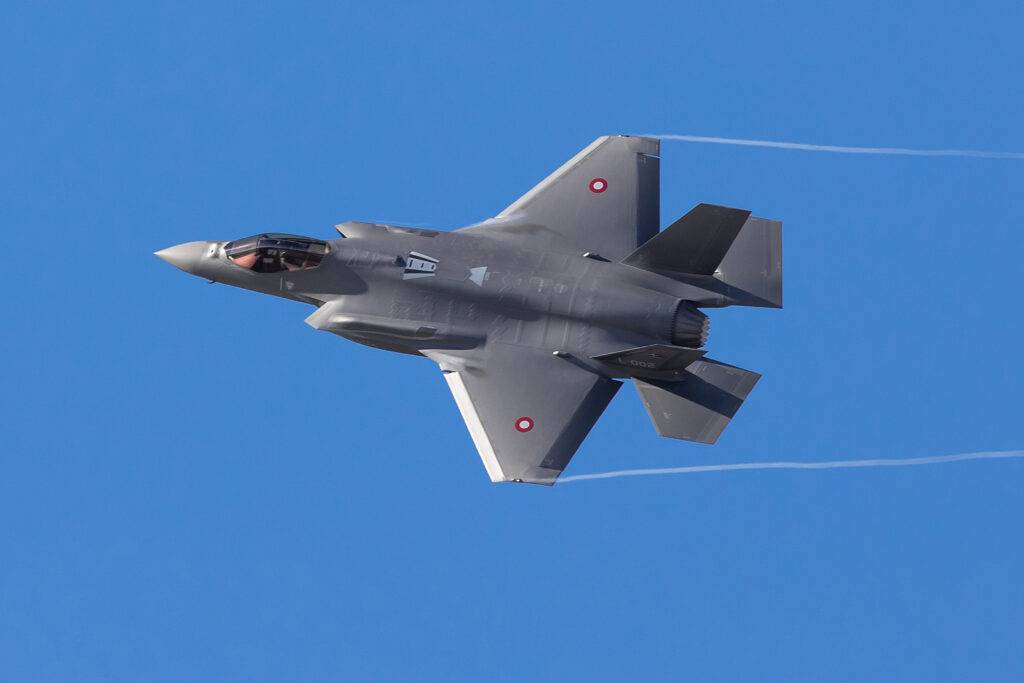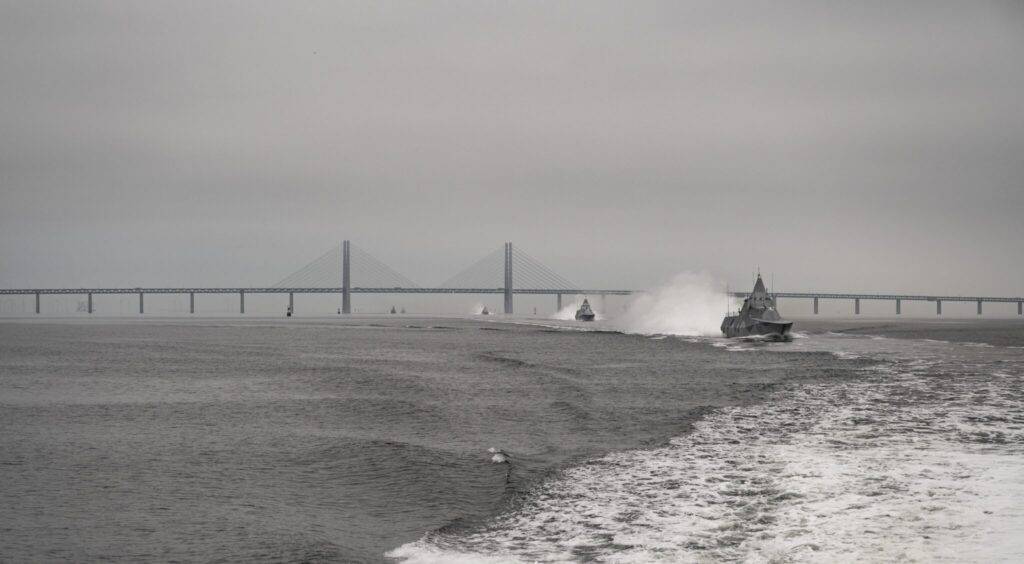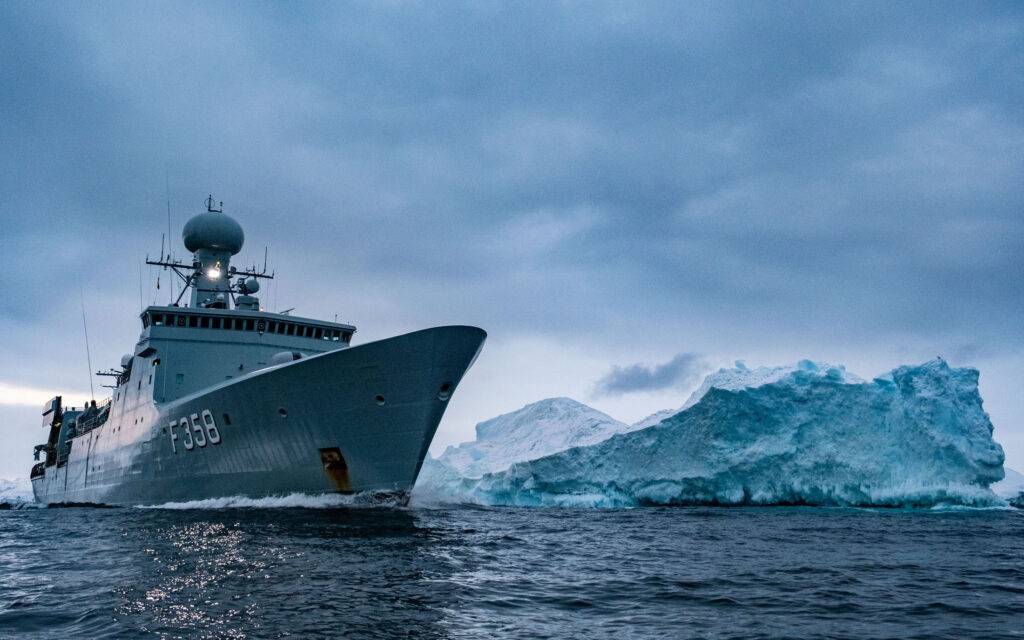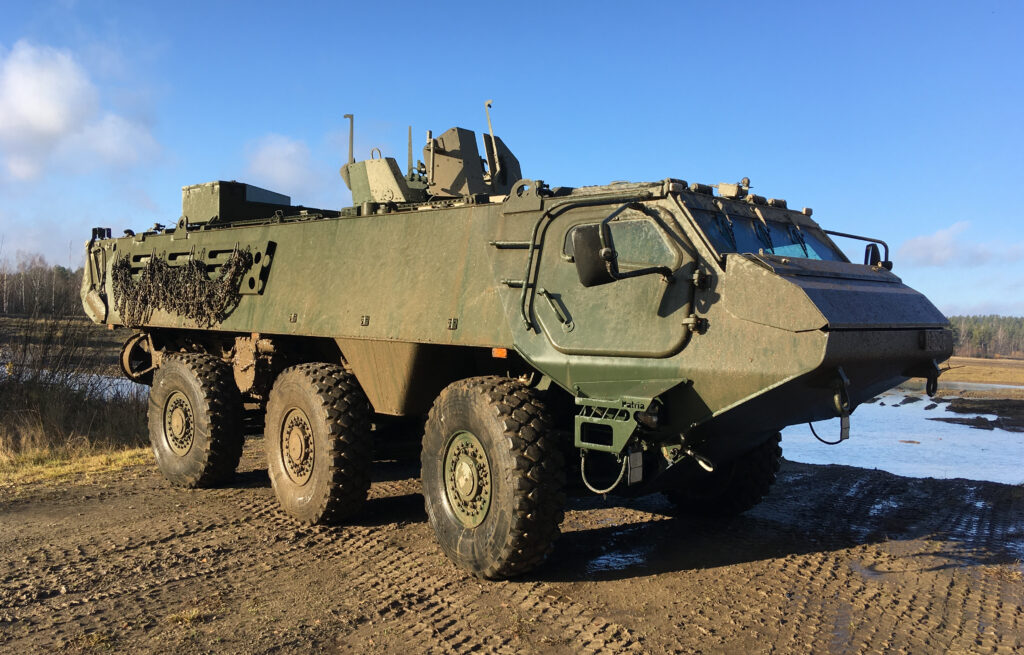Denmark has significantly enhanced its defence capabilities recently, particularly in the Arctic and North Atlantic regions. This move comes in response to escalating geopolitical tensions and renewed interest from U.S. President Donald Trump in acquiring Greenland.
In October 2024, the U.S. Department of State approved a potential sale of up to 203 advanced missiles to Denmark. These missiles are intended to augment the capabilities of Denmark’s F-35 fighter jets, thereby strengthening the nation’s air defence systems. While the U.S. Congress has yet to finalize the sale, this development underscores the deepening defence collaboration between Denmark and the United States.

Denmark has recently undertaken several significant defence investment initiatives to enhance its military capabilities and address emerging security challenges:
- Increased Defence Spending (2024-2028): In March 2024, the Danish government proposed an increase in defence expenditure by DKK 40.5 billion (approximately €5.4 billion) over five years. This investment aims to fast-track key military capabilities and strengthen support to Ukraine. The plan includes building up the Army’s 1st Brigade for NATO deployment, acquiring land-based air defence systems, and enhancing the Navy’s anti-submarine warfare capabilities.
- Arctic Defence Investment: In January 2025, Denmark announced a €2 billion investment to bolster its military presence in the Arctic, particularly in Greenland. This decision responds to increasing geopolitical tensions and aims to enhance surveillance and sovereignty in the region. The funds will be allocated for three new Arctic navy vessels, additional long-range surveillance drones, and improved satellite surveillance capabilities.
- Acquisition of CV90 Combat Vehicles: In December 2024, Denmark signed a contract worth €2.4 billion with BAE Systems to procure 115 CV90 armored combat vehicles. This acquisition is part of a joint effort with Sweden to strengthen armored capabilities and includes provisions for supporting Ukraine’s defence needs.
- Donation of CAESAR Howitzers to Ukraine: In January 2023, Denmark decided to donate its entire fleet of CAESAR self-propelled howitzers to Ukraine to support its defence efforts. To fill the resulting capability gap, Denmark opted to procure ATMOS 2000 artillery systems from Israel’s Soltam Systems, citing the ability to deliver the howitzers quickly as a key factor in the decision.
- Fast-Tracking Defence Investments: Recognizing the deteriorating security situation in Europe, Denmark proposed in March 2024 to accelerate defence investments. The proposal includes increasing the number of conscripts to approximately 5,000 annually, extending service to 11 months, and implementing full gender equality in conscription. This initiative aims to address long-standing underinvestment and enhance Denmark’s defence readiness.
The Greenland Dispute and Defence Spending
President Trump’s persistent interest in purchasing Greenland has intensified discussions about Denmark’s defence investments. In December 2024, Denmark announced plans to bolster its military presence in Greenland, allocating substantial funds for new patrol ships, long-range drones, and upgraded airfields capable of supporting F-35 operations. This initiative aims to enhance surveillance and sovereignty in the Arctic region. Despite these efforts, Trump has criticized Denmark, asserting that it has not sufficiently increased its defence spending, especially in light of Greenland’s strategic importance.
Support from Nordic Allies
In the face of U.S. pressure, Denmark has received backing from its Nordic neighbors. Swedish Prime Minister Ulf Kristersson emphasized that decisions regarding Greenland’s future rest solely with Denmark and Greenland. Norwegian Prime Minister Jonas Gahr Støre described Trump’s remarks as “unusual,” reinforcing the sentiment that territorial negotiations should not be influenced by external pressures. Finnish Prime Minister Petteri Orpo stated that Finland supports Greenland remaining part of Denmark.
Gateway to the Baltic Sea

Geographically, Denmark serves as a crucial gateway to the Baltic Sea, a region of significant strategic value to NATO. The recent accession of Finland and Sweden into NATO has transformed the Baltic Sea into a predominantly NATO-aligned area, intensifying its importance in the alliance’s defence strategy. Denmark’s control over the Danish Straits ensures access to and from the Baltic Sea, monitoring naval activities and safeguarding maritime routes.
Russia’s Continuing Hybrid Warfare
In recent years, the Baltic Sea region has experienced a series of incidents involving damage to critical undersea infrastructure, raising concerns about maritime security and potential acts of sabotage. On October 8, 2023, the Baltic Connector gas pipeline, which links Finland and Estonia, experienced a sudden pressure drop, leading to its shutdown due to a suspected leak. Investigations revealed that the damage was likely caused by external mechanical force, with a Chinese-owned container ship, the Newnew Polar Bear, identified as a prime suspect. The vessel was believed to have dragged its anchor across the seabed, damaging both the pipeline and nearby communication cables. The Chinese government later acknowledged the incident, attributing it to an accident caused by severe weather conditions.
In mid-November 2024, two significant undersea communication cables were severed in the Baltic Sea:
- BCS East-West Interlink: This 218-kilometer cable connects Lithuania and Sweden. The disruption occurred on November 17, 2024, leading to a reduction in internet capacity between the two countries.
- C-Lion1 Cable: Spanning approximately 1,200 kilometers, this cable links Finland and Germany. The break was detected on November 18, 2024, off the coast of Sweden’s Öland Island.
Investigations into these incidents focused on the Chinese bulk carrier Yi Peng 3, which was present in the vicinity during the time of the disruptions. After diplomatic negotiations, Chinese authorities permitted European investigators to board the vessel in December 2024. The outcome of these investigations has not been publicly disclosed.
On December 25, 2024, the EstLink 2 power cable, a critical infrastructure connecting the electrical grids of Finland and Estonia, was found damaged. Simultaneously, four communication cables in the region were also severed. Finnish authorities boarded the Russian oil tanker Eagle S, suspecting it of causing the damage by dragging its anchor. The vessel, part of Russia’s so-called “shadow fleet,” was detained for further investigation.
These incidents prompted regional authorities and NATO to enhance surveillance and protective measures to safeguard critical maritime assets. Denmark’s strategic position necessitates a proactive role in detecting and countering such hybrid threats, ensuring the security of both national and allied infrastructures.
Enhancing Danish Naval Capabilities
In light of these challenges, Denmark has committed to increasing its defence budget, aiming to reach the NATO target of 2% of GDP by 2030. This financial commitment will support the acquisition of advanced surveillance systems, the enhancement of naval capabilities, and the strengthening of cyber defence measures. By doing so, Denmark aims to fortify its territorial integrity and contribute effectively to regional stability.
Read More:
- CSIS: Seizing Greenland Is Worse Than a Bad Deal
- Forsvarsministeriet: USA’s regering giver Danmark lovning på køb af op til 203 missiler (in Danish)
- Security User: Store mængder amerikansk militærudstyr skal igennem Danmark (in Danish)
- YLE: PM – Finland supports Greenland remaining part of Denmark
- New York Post: Denmark to increase military spending in North Atlantic by $2 billion amid row with Trump over Greenland
- Staight Arrow News: Denmark unveils $2 billion Arctic defense plan after Trump threats
- Wikipedia: Proposed United States acquisition of Greenland
- NATO: Remarks by NATO Secretary General Mark Rutte at the European Parliament’s Committee on Foreign Affairs and Subcommittee on Security and Defence
- Atlantic Council: On Greenland, Trump’s choice is warmed-over McKinley or a landmark security deal
- Politico: EU leaders deflect Trump on Greenland and on tariffs
- TRT World: Trump’s Greenland push puts Nordic unity under the spotlight
- Reuters: Finland says ‘outside activity’ likely damaged gas pipeline, telecoms cable
- Maritime Executive: China Acknowledges That Boxship Caused Balticconnector Pipeline Breach
- DataCenterDynamics: Lithuania-Sweden subsea cable cut, was 10m from severed Finnish-German cable
- Reuters: Two undersea cables in Baltic Sea cut, Germany and Finland fear sabotage
- The Wall Street Journal: China Lets European Investigators Board Ship Suspected of Sabotage After Weeks of Secret Talks
- The Times: Russian oil tanker boarded by Finland over ‘aggravated sabotage’
- CBRE: Lithuania-Sweden subsea cable cut, was 10m from severed Finnish-German cable
- Reuters: Two undersea cables in Baltic Sea cut, Germany and Finland fear sabotage
- ESD: The Baltic: A ‘strategic sea
- European Council on Foreign Relations: Northern lights: How a Nordic-Baltic coalition of the willing can do even more for Ukraine



